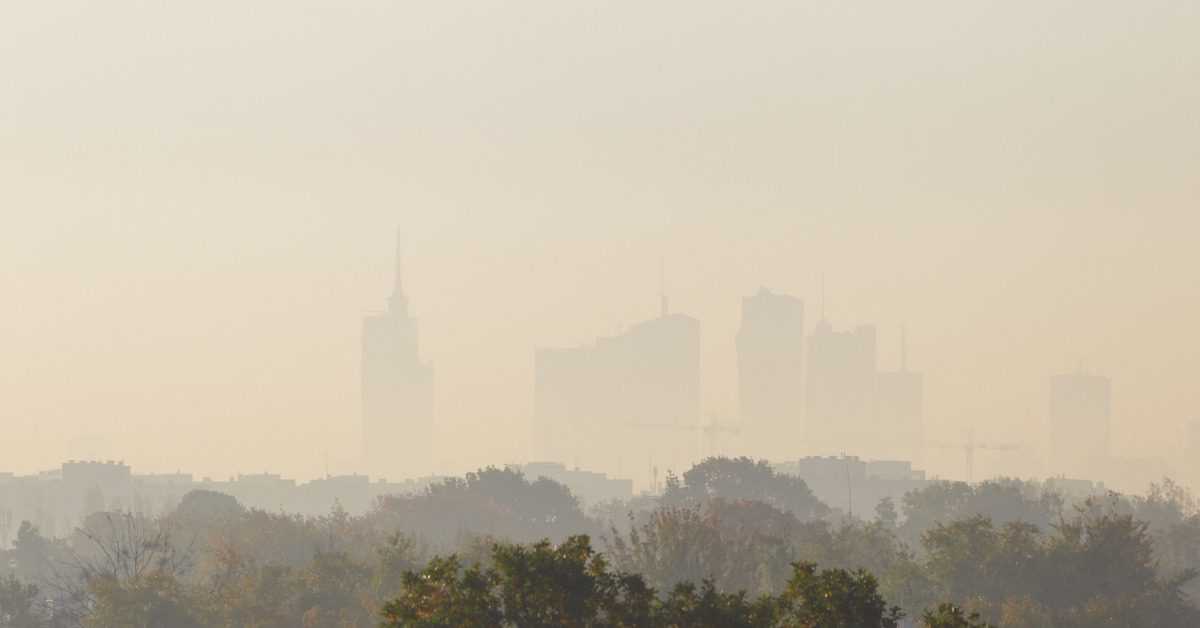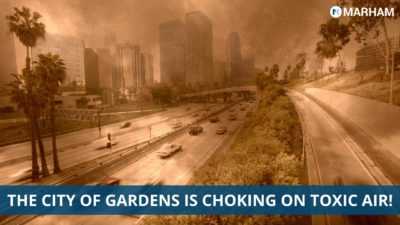Smoke-filled streets, red-eyed residents, and cars flash their headlights during the day. The Smog has blanketed Lahore again, and the citizens are becoming desperate.
Lahore, a bustling megacity of over 11 million people in Punjab province near the Indian border, is consistently ranked as the most air polluted city in the world, according to the Foreign Policy. Pollution and cold weather combine to engulf the city in smog, interrupting flights, causing significant road closures, and severely affecting the health of the city’s residents.
The smog that has set a near-permanent haze over Lahore has made it difficult for residents to breathe, particularly children and elderly, urged the government to declare a ‘calamity’ and give the public a three-day weekend to limit emissions from vehicles and industry. On Wednesday, the Lahore High Court went even further, advising authorities to plan for a “one-week climate emergency lockdown” if the condition cannot be resolved.


According to Justice (retd.) Ali Akbar Qureshi
“Vehicle emissions cause 43-45% air pollution,” Justice (retd.) Ali Akbar Qureshi, who heads the judicial commission, suggests steps to control smog. Despite the provincial government’s success in reducing industrial emissions and crop stubble burning, which are additional sources of air pollution, he said that the persistence of smog indicated that vehicular pollution should be addressed further.
In response to the slow progress of the provincial government in fighting smog, he said the commission had taken a “zero tolerance” approach to vehicle emissions. “We have run out of options now, with only the impounding of vehicles emitting hazardous smoke left,” he said, adding that the commission has begun to confiscate these vehicles across the city through teams it has formed.
“As a last resort, the commission had proposed that the court order the closure of all educational institutions and offices in the provincial capital for one week. This would help reduce the smog crisis to a great extent. Official data shows that hospitals in Lahore have treated several patients for heavy exposure to hazardous air, which is causing health complications such as asthma, lung damage, bronchial infections, strokes, heart problems, and shortened life expectancy.”


Commission’s Findings
A report submitted by the commission to the LHC shows that the commission inspected 6,277 brick kilns in Punjab, shutting down 336 of them for not implementing zig-zag technology. In addition, 865 brick kiln owners were arrested for endangering the environment and fined Rs. 47 million.
Furthermore, the commission has fined Rs. 6.5 million for vehicles that emit hazardous smoke; Rs. 10.2 million for farmers who burn crop stubble; and shut down 481 industrial units.
During Wednesday’s proceedings, the court dismissed an Environmental Protection Department report claiming that the smog scenario had improved in the previous week. It will keep improving in the coming days. According to Justice Shahid Kareem, smog continued to entrap not only Lahore but also all of its nearby areas, as well as other cities in the province that have been ranked among the most polluted in the world.
The Punjab Disaster Management Authority requested a week from the court to take strict steps to ensure that air quality improved, and the hearing was adjourned.
The Air Quality Index of Lahore closed out Wednesday at 200, or “very unhealthy,” with PM2.5 concentrations over 40 times higher than WHO standards. Kot Lakhpat had the worst air quality within the city limits with an AQI of 479, followed by Bahria Orchard with 407, Model Town with 396, and Township with 364 AQIs.
PM2.5 refers to particulate matter smaller than 2.5 micrometers in the atmosphere, which can only be observed with an electron microscope. Fine particles can come from various places, such as power plants and agricultural burning, and automobile emissions, last longer in the atmosphere than heavier particles. This increases the likelihood of humans and animals inhaling them, where they would bypass the nose and throat and enter deep into the lungs.
It is tragic to see Lahore, once known as the “city of gardens,” choking on toxic air because of a lack of concerted efforts to combat air pollution. While Lahore’s 13 million residents were once looking forward to the welcome respite of winter, now they must begin preparing for another bout of smog, which has now become a phenomenon that has attained the status of a “fifth season.”
FAQs
1. What happens when the air quality is bad?
Long-term exposure to bad quality air can have a permanent impact on your health like accelerated aging of your lungs, loss of lung capacity, decreased lung function, asthma, emphysema, bronchitis, and possibly cancer. If you have any queries, you can book an appointment with the top pulmonologists in Pakistan.
2. Is Lahore Polluted?
Yes, during the past month, Lahore, Pakistan, has consistently ranked as the most air polluted city in the country.
3. Does wearing a mask help with poor air quality?
Wearing a high-quality air pollution mask has been shown to lower the risk of exposure to airborne particulates and PM2.5, reducing the risk of illness and death from air pollution.
Book an appointment now, to answer all your queries. You can book an appointment with the top Pulmonologists through Marham by calling at Marham helpline: 0311-1222398 or by online booking facility through the website or Marham mobile app.
Can’t Find The App?
Android Users:
https://play.google.com/store/apps/details?id=controllers.marham.marhammed&hl=en
Drop a review for us at Playstore if you’ve had a good experience!
iPhone Users:
https://apps.apple.com/pk/app/marham-find-a-doctor/id1095243102
Stay Home. Stay Safe!

